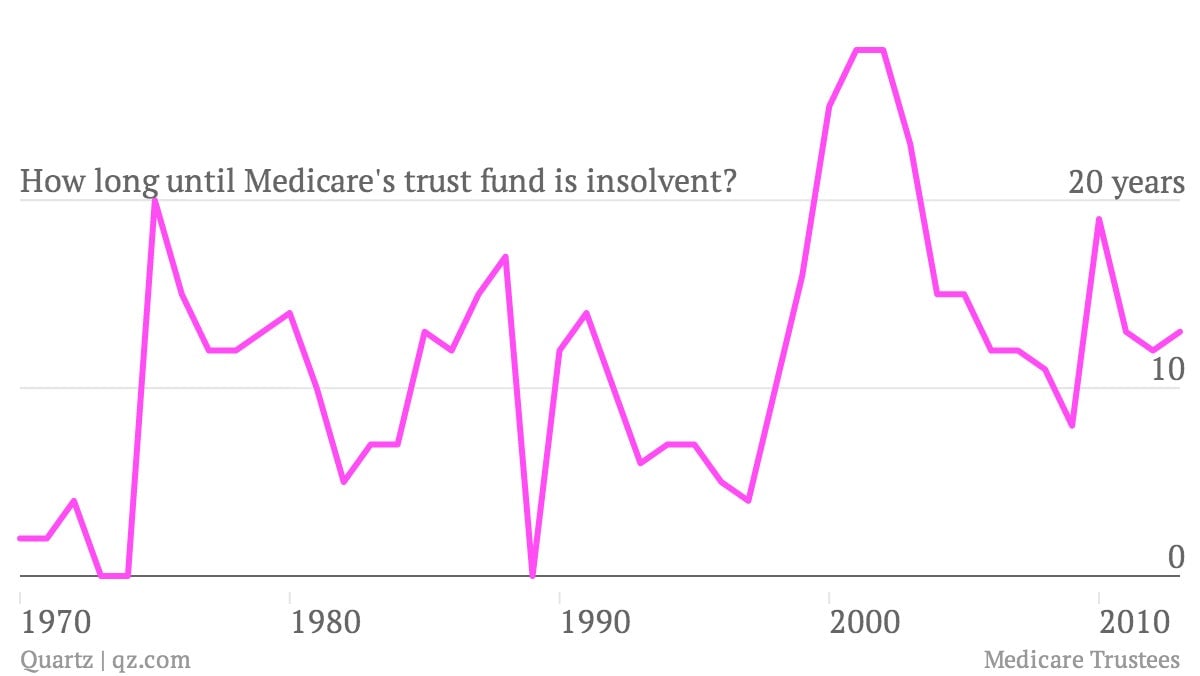Medicare is going to run out of money in about a decade—but that’s what they always say
Chalk it up to the perils of projection: Today we learn that Medicare, the US public health insurance program for seniors, will exhaust its trust fund in 2026, thirteen years from now. When the trust fund runs out, the program will need to either reduce benefits, raise taxes, or borrow more money to meet its obligations. It’s, um, one of the most important decisions legislators need to make about reducing US public debt. And it feels like thirteen years is just around the corner, right? Maybe, but as Sean West notes, Medicare projections (pdf) have a long history of ups and downs. The graph above shows how forecasts of Medicare insolvency have evolved over time (note: a value of zero doesn’t indicate a doomsday prediction; it merely means there was no specific forecast in that year).

Chalk it up to the perils of projection: Today we learn that Medicare, the US public health insurance program for seniors, will exhaust its trust fund in 2026, thirteen years from now. When the trust fund runs out, the program will need to either reduce benefits, raise taxes, or borrow more money to meet its obligations. It’s, um, one of the most important decisions legislators need to make about reducing US public debt. And it feels like thirteen years is just around the corner, right? Maybe, but as Sean West notes, Medicare projections (pdf) have a long history of ups and downs. The graph above shows how forecasts of Medicare insolvency have evolved over time (note: a value of zero doesn’t indicate a doomsday prediction; it merely means there was no specific forecast in that year).
The average prediction of Medicare’s insolvency is eleven years. Note, too, that the forecasts track recessions. In times of trouble, tax revenues dip and predicted usage of the program goes up, depleting the fund. Conversely, when the economy is booming, more revenue is predicted to come in, and less healthcare is predicted to go out. This year, we’re seeing a slight increase in the program’s longevity, for several reasons: 1) the mild recovery, 2) the 2010 health care reform law, which cut hundreds of billions in Medicare spending, 3) budget cuts agreed to in 2011 and 4) an expectation of slower growth in health care costs. Of course, America’s health care system or public finances still need more work, but hey, it’s a start.